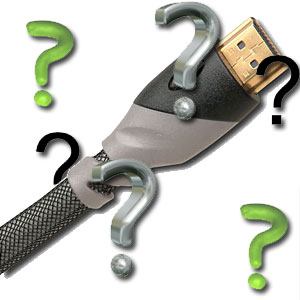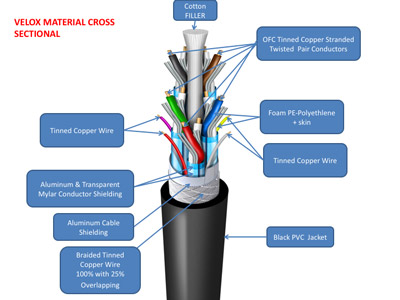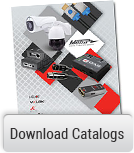History of HDMI: In the Beginning
Tuesday, July 7, 2015 8:50:46 PM America/New_York
By C. I. Source
Although HDMI® 2.0 has been out for a while, this technology still has a dark shroud of mystery surrounding it. Dealers and manufactures are afraid of HDMI while customer demand is looming. We’ll examine some of the issues we’ve had to deal with as we get underway with this new frontier in Part 1. Be sure to watch for Part 2, Into the Future of HDMI in our next installment.
The question is: “As an industry, how do we salve the fears and provide the client with what they need to move forward with the new HDMI interface?”
To fully understand the new technology, let’s review. Let’s look at how we evolved, where we are presently, and where we are headed in the future:
Into the Future of HDMI
Tuesday, July 14, 2015 8:42:51 PM America/New_York
By C. I. Source
In Part 1 we discussed “In the Beginning”: specs, roadblocks, software, hardware, cables, standards, and more. Now, let’s look Into the Future of HDMI®.
Here is what we will need to do to continue to work:
Now that you are completely flummoxed and plotting your escape from the world of “CI” to a job flipping burgers, how do you salvage your career and start planning for the future? You will do this by looking forward — great scott! For years we wired the world with coax in various forms, from one to six cables per bundle. It worked pretty much every time. Then along came HDMI. We had to switch over to Category X cables to get some distance. At first, it took Cat/X 2 cables, but now we are down to one — or are we? Yes, there are cables that will support the UHD standard of 4K/60, 4:2:0, some even up to 100’. Ethereal Evolv cables are an example and we do have a new “true” 18 Gbps cable in the new Velox series, now shipping.
Get Your HDMI Questions Answered
Monday, July 20, 2015 8:31:28 PM America/New_York

We pride ourselves on helping to educate our customers and support their business. It is because of this that we are sponsoring a special webinar tomorrow, Tuesday, July 21 at 2 p.m. EDT featuring Jeff Boccaccio, president of DPL Labs and a columnist of CE Pro's "HDMI Corner". This webinar is free and not intended to sell you on HDMI®. It's designed to help you make the best cabling decisions possible.
To sign up for the webinar please go here. Do not miss this opportunity to have all of your questions answered.
Part 1 of 6 - Construction of an HDMI Cable
Wednesday, September 23, 2015 6:52:24 PM America/New_York

We talk a lot about our cables while we are planning our displays for the CEDIA booth. Hours are spent grouping our cables together by category and the different technology they provide. I ask questions about each of our cables and when I started looking at my notes I saw these questions:
“What is the truth regarding HDMI and is there in fact a difference from one cable to another? Is there a reason to buy a better HDMI cable?”
In getting these answers, this blog post was born and over the next six weeks we are going to discuss the six parts of an HDMI cable and why customers should purchase a better (and preferably one of Metra Home’s) cables.
As most dealers know Metra Home has been a DPL member (www.dpllabs.com) since its inception. In our association with DPL we have learned that the vast majority of claims made about HDMI and HDMI cables are confusing and misleading. Metra Home has been fortunate to be associated with DPL and has over time received a reputation for good working, reliable and affordable products due to this association.
Part 2 of 6 - Construction of a HDMI Cable: Shielding
Thursday, October 1, 2015 6:35:00 PM America/New_York

The second part of this blog series we are discussing the two types of shielding and why they are important. The two types of shielding that a HDIMI cable should have to provide the best protection are braid and foil.
A braid shield keeps outside noise from interfering with your HDMI® cable by cutting down the 110/60Hz interference. If outside RF/EMI noise penetrates the HDMI cable it can cause all sorts of havoc. Since pretty much everyone has had some experience with HDMI Cat/x Extender failure due to high voltage switched devices (lights, motors, etc.) cause a short term dropout of the HDMI signal, there is an understanding of this issue.
Foil shield reduces the high frequency interference and keeps the noise within the cable. A foil shield also protects components from damage caused by spurious HDMI noise from running amok in your system like a gremlin. Foil shielding around the TMDS feeds of a HDMI cable also keeps the noise from causing problems with infra-red components and RF control systems.











